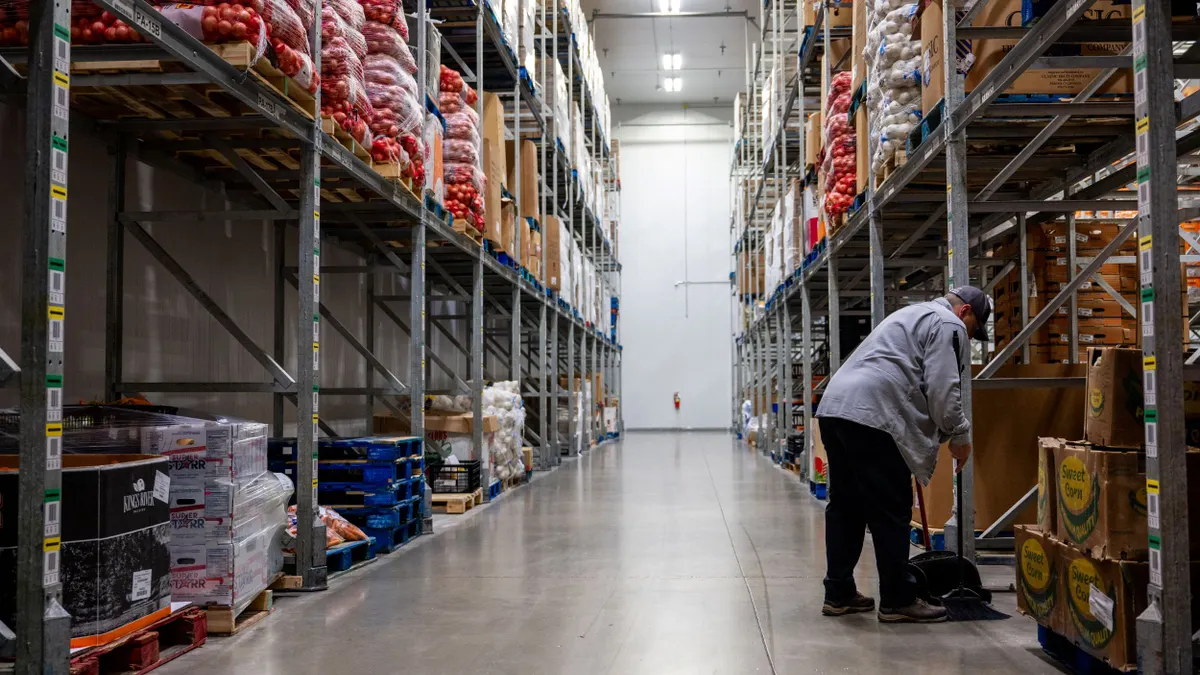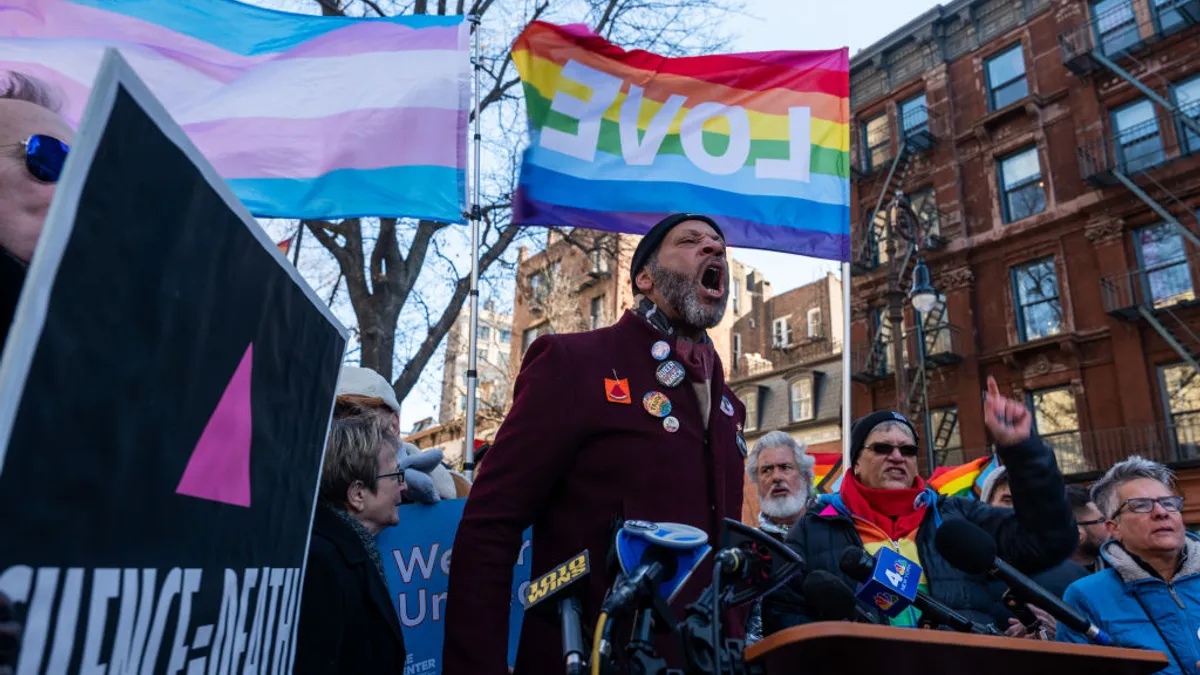In a year that has seen rapid workplace change, people with disabilities continue to find barriers to employment. While the pandemic leveled the playing field in some ways, in others, a decade of progress was undone by COVID-19, leaving employers and disability advocates to find new solutions during unprecedented times.
Tactically, business leaders looking to improve inclusion for people of all abilities should focus on accessibility of office spaces, transportation to and for work, and accessible software and technology to promote equal access to company resources, according to multiple sources from corporate employee resource groups (ERGs) that spoke with HR Dive. Doing all of this while building the organization’s capacity for empathy will go a long way to developing inclusion through empowerment, they said.
"I think the most powerful thing we can do a lot of times is listen," Rob Rusch, founder of PwC’s local ERG for employees with disabilities in Charlotte, said. "The last thing that people with disabilities want sometimes is help, because we know the skills that we have and we want to just be in an environment where we can leverage those skills and use those skills, rather than being told [what to do]."
Listen and build empathy
Deploying surveys and other mechanisms for feedback between employees and HR can allow for a better understanding of how to improve working conditions. The current climate may not allow for a full-scale survey effort, but any way to open lines of communication can be beneficial, experts said.
"As companies and organizations strive to create inclusive cultures, I would recommend embracing the input from their current employees who are in the disability community," Marcus Williams, principal talent consultant at Kaiser Permanente, a company regularly lauded for its diversity efforts, said via email. "It is very important to take an introspective look into current practices and procedures to identify areas of opportunity to be better stewards of inclusivity."
The co-chairs of TIAA’s Diverse Abilities group sent a survey to its employees early this year "to seek guidance on specific concentration of topics for 2020 programming," according to Laura Curth, senior business manager at TIAA and one of the national co-chairs. The response revealed interest in organizing for smaller communities within the larger umbrella of employees with disabilities; it also revealed a desire for events and programming exposing co-workers to common challenges, such as "invisible disabilities," and driving awareness around autism, anxiety and employee benefits. TIAA is another company whose diversity efforts have garnered attention.
For Rusch, an asset and wealth management tax director at PwC, starting an employee resource group helped him learn about the variety of needs and types of people within the community. "I learn something every day, I feel, like talking to people and interacting with them," Rusch, who has spinal muscular atrophy, told HR Dive. "I feel a lot of [my ERG leadership role] is about learning how to develop empathy. [...] There are just so many different experiences and so many different perspectives that I think we all find ourselves growing our empathy when we talk to someone who has lived a completely different life."
"One thing for me that I focus very heavily on is psychological safety," he later added.
Tactical support
Practically speaking, individuals with disabilities sometimes experience a number of barriers to being their full selves and experiencing psychological safety at work.
"I think one of the biggest barriers is transportation," Rusch said, noting that while traveling to New York he saw exorbitant costs for his accessible transportation from the airport to a client site, acknowledging that he was lucky PwC covered that expense.
"A lot of individuals with disabilities are just sort of locked out of the workforce because they can't afford all the transportation they might need and maybe there's other personal care assistance items [they need]," Rusch said. The pandemic-driven shift to remote work may have been a driver for disability inclusion, but once offices open back up these problems are likely to resurface if not addressed.
At the office, a lack of accessibility can play out in a number of different ways, from trouble entering the building or using the restrooms to receiving company messaging shared through various platforms.
"I know that at PwC we've done training and are trying to put a lot of effort into having closed captioning everywhere that we can and other assistive technology to help assist individuals who might need it to be able to interact better with the resources that we produce, the software for recruiters, etc.," Rusch said. "It's a part of how we think about every app and every technology, now we have a dedicated team to think through those things. So assistive technology can be a big way to get over [different barriers]."
Once some of those barriers are removed, it can unleash a wave of untapped employee potential in support of organizational goals. "Working in the disability space has validated my commitment to a life of service to our country, my community, and to people at large," Williams said. "I have realized that one of the greatest aspects of our society are the diverse abilities that each person brings into the workplace. The equation that I like to use is when we add all of our contributions, skills, and abilities together, it totals to the sum of what is needed to achieve an organization’s mission."
As with any organizational change or attempts to build a better company culture, visibility and commitment from leadership can help drive acceptance of new policies or initiatives. Work within a specific form of diversity will also help with inclusion more broadly across an organization and help drive a positive shift in company culture, the experts said.
"If you create an environment that's good for a professional with a disability to work in [...]," Rusch said, "odds are it's an environment that others are also a lot more effective at working in, too."




















